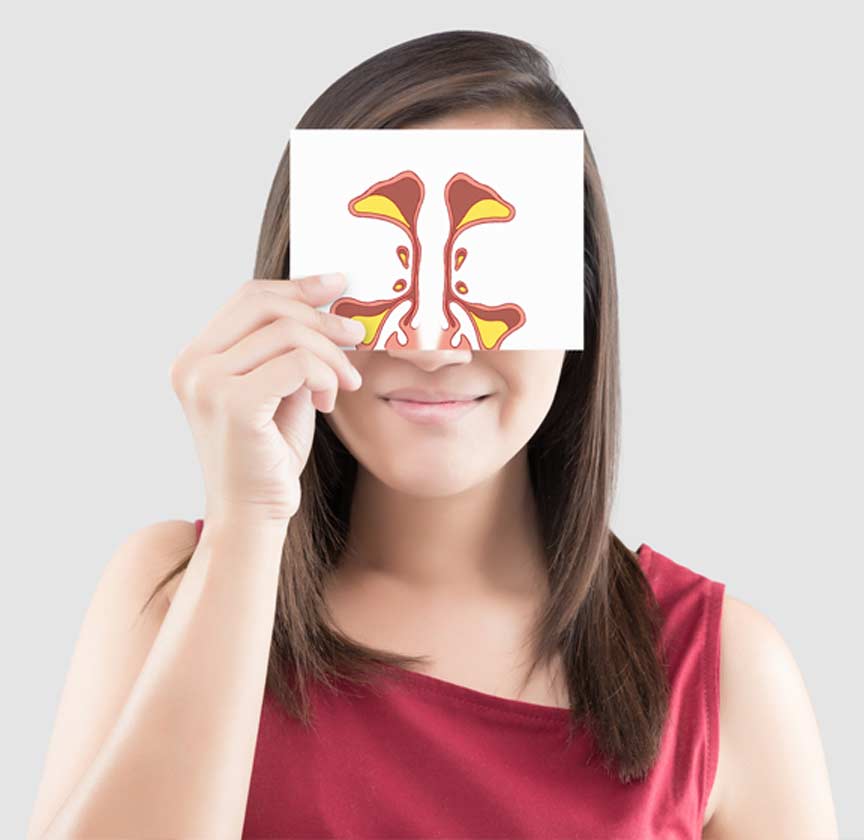
Nasal septum deviation refers to misalignment of a thin wall that divides your nasal passages.
It’s not unusual for this piece of cartilage to be a bit off center one way or the other. It could become a problem, however, if the misalignment is excessive enough to contribute to nasal congestion and potentially serious breathing or airflow issues.
Here’s what you need to know about what’s commonly referred to as a deviated septum.
Why Does a Nasal Septum Become Misaligned?
A nasal septum is sometimes misaligned at birth. If this is the case, the deformity occurs at some point during fetal development and it is apparent at birth. A deviated septum can also develop because of an injury, such as a hard fall or impact.
For some individuals, age-related changes to tissues within the nose can make a septum become increasingly misaligned. Chronic sinus infections and nasal obstructions can also affect this structure. Symptoms typically associated with nasal septum deviation include:
- Feeling of having a blockage in one or both nostrils
- Facial pain
- Changing breathing patterns – e.g., becoming a “mouth breather”
- Related issues with sleep apnea
- Frequent nosebleeds


How is a Diagnosis Made?
During an initial examination, a handheld instrument that spreads your nostrils (nasal speculum) may be used to look at your nasal septum. A lighted tube (otoscope) is sometimes used to look further into your nostrils and sinus cavities. A decongestant spray may be applied to ease inflammation so tissues can be viewed more clearly. Another way to explore the nasal and sinus passages is with the insertion of a lighted scope that has a camera attached to it (nasal endoscopy).
What Are Treatment Options for Nasal Septum Deviation?
Initially, decongestants may be prescribed to manage symptoms if the misalignment is minor or not excessively blocking airflow. Antihistamines could provide relief if you have underlying congestion and inflammation due to allergies, and nasal sprays may improve drainage by reducing swelling in your nostrils. It may take a few weeks for sprays to take full effect.
When is Surgery Considered?
If nasal septum deviation is severe or associated with severe symptoms that aren’t becoming less of a burden with conservative treatments, surgery may become an appropriate option. Surgery performed for this purpose is referred to as septoplasty. During the procedure, the following steps are typically taken:
- Incisions are made to access the nasal septum
- The septum’s protective covering (mucous membrane) is lifted up
- Pieces of bone or cartilage are removed
- The mucous membrane is repositioned
If your symptoms were mainly related to a nasal obstruction, surgery may provide complete relief and the restoration of full nasal airflow. However, if you have underlying problems with nasal congestion or allergies, you’ll need to manage those issues separately with your team at Nasal & Sinus Surgery Center, although surgery may contribute to improvements.
Depending on the extent of nasal septum deviation that needs to be corrected, the shape of your nose may be altered. If the change is significant, you may want to consider nasal reconstruction, or rhinoplasty. Injuries that might contribute to a deviated septum may be prevented by wearing protective headgear when playing contact sports and buckling up when riding in a vehicle.
